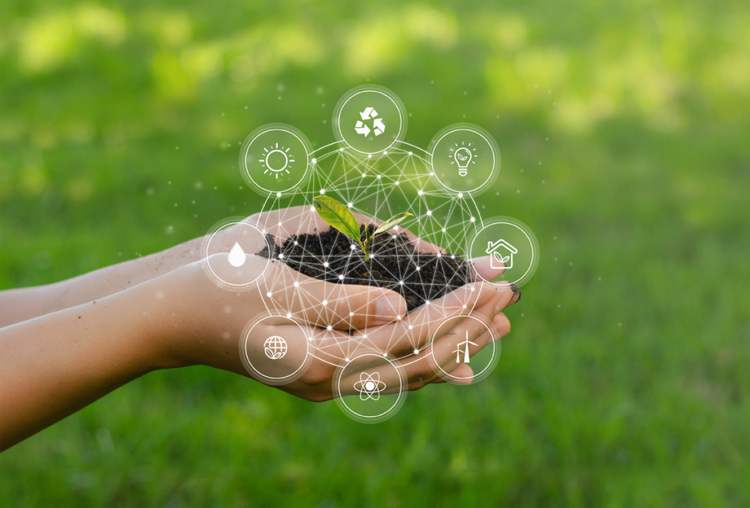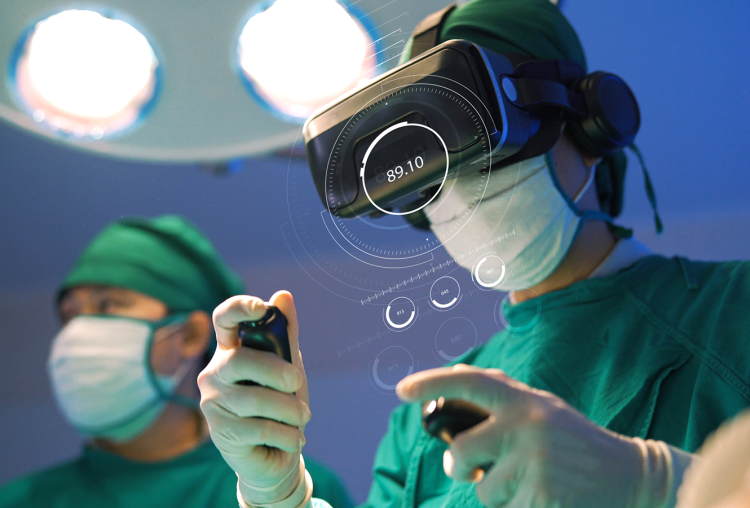I really want to talk about changing the way we do business. And I mean radically changing it, so that businesses can flourish while at the same time protecting communities and taking care of the environment. Is that too much to ask? I think not – in this article I’ll explain how and why AI is ready to drive a more sustainable yet commercially successful future.
The starting point is the conventional view of the triple bottom line: people, planet and profit. The problem here is the conflicting and contradictory tension at play between these three goals. Business traditionally sees them as competing forces to be negotiated rather than as mutually beneficial objectives. Worse, one gets sacrificed for the other two.
Along with my colleagues, I’m motivated by our company vision of a future unconstrained by current thinking. In that spirit, what might the future of business look like if we flip the scenario I’ve just described on its head? There’s no doubt in my mind that artificial intelligence is ready to enable this by putting sustainability at the core of business endeavour and bringing harmony to the three Ps. Let me explain.
As we are only too aware, climate change is already creating global disruption and increasing market volatility. To survive and mitigate its effects, businesses must reduce the impacts of their operations on people and the environment. They must also focus on strengthening their resilience – anticipating and adapting to protect facilities and operations, supply and distribution chains, utilities, raw materials and food. Not to mention their employees, customers and local communities.
AI has limitless potential to disrupt every conceivable real-world sector
Although by no means a panacea for all these challenges, AI provides us with technologies and processes to support sustainable objectives and have an impact on climate change. To break that down a little further, we need to consider AI from three key perspectives – rapid adoption of the technology; responsible processes to develop and deliver the technology; and a deeper connection between the technology and people as innovation develops.
AI for sustainability

I’m going to unpack those three dimensions a little further now, starting with the need to hasten the adoption of the underlying technologies and ecosystems that we might describe as ‘AI for sustainability’. According to April’s IPCC report, the global temperature will stabilise when carbon dioxide emissions reach net zero. For 1.5°C (2.7°F), this means achieving net-zero carbon dioxide emissions globally in the early 2050s. The report focuses on seven avenues of responses and adaptions to mitigate climate change with technology pivotal to solving significant challenges in energy systems.
Many businesses think that technologies which support sustainability are decades away. In truth, AI capitalises on Industry 4.0 technologies that are currently being developed, which include cloud computing, IoT, edge analytics, automation, and Big Data, all enabled by 5G connectivity. Implementing these technologies with the urgency they are required can profoundly impact climate change, providing viable, impactful, sustainable and profitable solutions.
We advocate an approach centred on investments in refinement and rapid adoption, which allows for continuous improvement through data-driven insights. To achieve this, businesses could consider the concept of minimum viable intelligence, a concept borrowed from agile software development. The idea is to build and develop your initial AI system with enough capability to launch and deliver value. The advantage is that data can be collected from the field and used to continually refine models and improve performance.
As part of our work towards reducing climate change impact for clients, CC has been exploring graph neural networks (GNNs) as one way to lessen the dependency on fossil fuels. They’re an application of AI that can support the modelling of multiple complex systems. Graphs are data structures with nodes and edges that highlight the relationships between components in the data. Many domains have graph-structured problems. In energy management, for example, fault diagnosis, power prediction and power flow calculations can support resource management and improve efficiency, ensuring that demand is supplied more readily by renewable sources rather than fossil fuels.
We’re also collaborating to help develop new materials and products though bioengineering. Among many projects, we’ve used AI to analyse protein structure and function – optimising the sequences of proteins for desired characteristics and predicting their performance for a given task. As nature’s catalytic and functional materials, proteins are valued in areas such as medicine, industrial catalysts and novel, biodegradable materials with a low-carbon footprint. The work encompasses AI, in-silco design and intelligent processes that support sustainable objectives by reducing lead times, development costs and, subsequently, the energy footprint of manufacturing new biomaterials.
A 2020 McKinsey Report estimated that “in 10 to 20 years, a visible pipeline of biological applications could create approximately $2 trillion to $4 trillion of direct annual economic impact”. This represents a significant opportunity in multiple sectors including pharma, agriculture and livestock and manufacturing.
It would be remiss of me not to address the energy-intensive nature of AI. Energy needs are exceptionally high during training (when a machine learning algorithm is building a model) and lower for inference (when applying the trained machine learning algorithm to make a prediction). The more complex the model, the more computational power is required. Engineers and scientists are tackling this from multiple angles, such as optimising algorithms, adapting training and inference methodologies – moving inference to edge devices, for example – developing low power chips and engineering efficiently cooled data centres.
We’ve been playing our part, for instance developing a high-performance AI system that functions on devices with limited computing power. Our concept system harnesses AI on a smartphone to improve treatment monitoring of tuberculosis (TB) in resource-limited countries. We’ve also successfully experimented with Arm’s Cortex-M55 processor and Ethos-U55 micro neural processing unit to achieve 7x power reduction and 1,000x speed increases. This represents a huge stride forward in edge AI capability.
Responsible AI

Now let me turn to responsible AI, my second area of focus for the keynote. Urgent action to curb climate change requires accelerated adoption yet careful consideration. Responsible AI principles may seem to slow progress on the surface, but without appropriate guardrails, businesses risk serious and costly repercussions. The OECD repository holds details of 700 AI policies from 60 countries. It outlines how governments intend to invest in AI and hold companies accountable for the impact of their products and services on consumers, communities and the environment.
Responsible AI practice, then, is integral to sustainability. It’s no longer a set of aspirations for businesses but a consumer demand. One that, when fulfilled, creates trust and loyalty. To ensure organisations deliver AI systems that consumers accept and trust, concepts such as data bias, interpretability, transparency and privacy should be addressed at various stages of product ideation. This makes it easier to manage issues during development, scaling and launch.
By carefully considering AI governance (the legal framework to protect human interests) and AI assurance (to build trust in AI), businesses can mitigate risk, reduce time to market and enhance their reputation. It’s for these reasons that we’ve created an in-house taskforce dedicated to AI assurance, the purpose of which is to help our clients to navigate their way to successful AI innovation and deployment, whilst maintaining accountability.
The human/machine workforce

The final piece of my sustainability jigsaw is the need to put employees at the centre of initiatives that support communities as well as business growth. Industry 4.0 has paved the way for efficient and automated processes that business functions and operations. Industry 5.0 will enable a future built on sustainability and social stability by empowering the human workforce to create and problem-solve. When technology works in tandem with humans, innovation becomes part of an organisation’s long-term strategy. This makes companies more sustainable and resilient and increases growth opportunities.
Our breakthrough research and development at CC is focused on helping our clients create next generation products and systems that can perceive and understand human emotional, psychological and physiological states in context. By bridging the worlds of psychology, behavioural science and AI we are working to enhance a person’s safety, performance and comfort. The opportunities here reach beyond sustainability to encompass the enhancement of rapid decision making in dynamic environments, including healthcare; the support of a more diverse user base with reduced mental/physical health risks; and the fostering of trust and increased engagement through real-time adaptive systems.
In summary then, and to paraphrase Einstein, we can’t solve our problems with the same thinking we used to create them. AI offers us new ways to solve humanity’s most significant challenges. If we consider the nature of the technologies and how we implement them – and put human interest at the heart of innovation – we’ll create sustainable solutions that support people, protect the planet and enhance economic growth.




